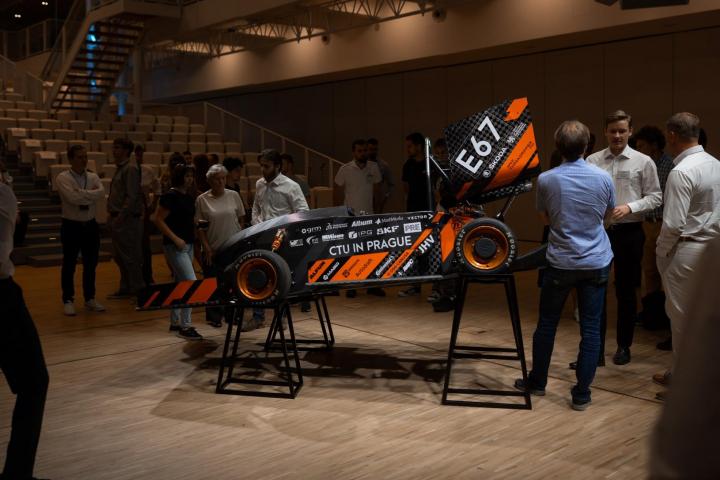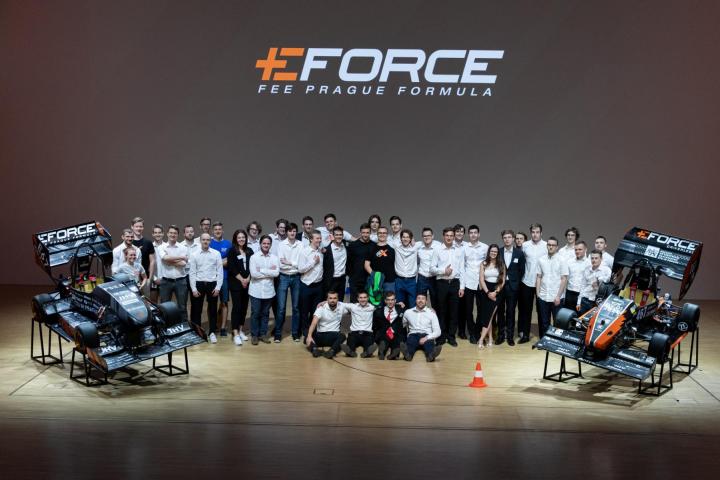
The event was launched by the Rector of the Czech Technical University in Prague doc. RNDr. Vojtěch Petráček, CSc. with his online speech, which was followed by the Vice Dean for Commercialization and Cooperation with Industry of the Faculty of Electrical Engineering prof. Ing. Jan Vobecký, DrSc. After the introductory speech for the team by captain Tomáš Krejčí, the highlight of the event followed, the unveiling of the two formulas.
For the development of the 11th generation of the formula cars, the team relied on the evolution of last year's monopost, which showed its potential and took 2nd place in last year's races in Spain and Croatia. Using advanced Fluent Adjoint simulation technology, the team has improved the aerodynamic performance of the vehicle while reducing the weight of the aero package. Lightweighting was also achieved in the carbon chassis, axles and gearboxes. The electronics have also been optimised. New temperature measurement units with a decentralised system have saved more than 100 metres of wiring, equivalent to a third of the original wiring length. The new steering wheel unit offers the possibility to adjust the display and parameter settings for individual pilots. In addition, it will also be used to collect telemetry data, enabling the formula to be diagnosed, and to transmit it over the air and while driving.
The self-driving monopost DV.01 has undergone changes mainly in software. The basis for all improvements was the implementation of the SLAM algorithm this year. This is used to map and locate the formula on the track, which can improve the trajectory planning of the formula. This year the team also implemented the race trajectory generation and the speed profile on it. The last area where significant improvements were made was in the environment perception. More accurate and faster cone detection was made possible by a new neural network that has automatic calibration and also works with the LiDAR detector.


